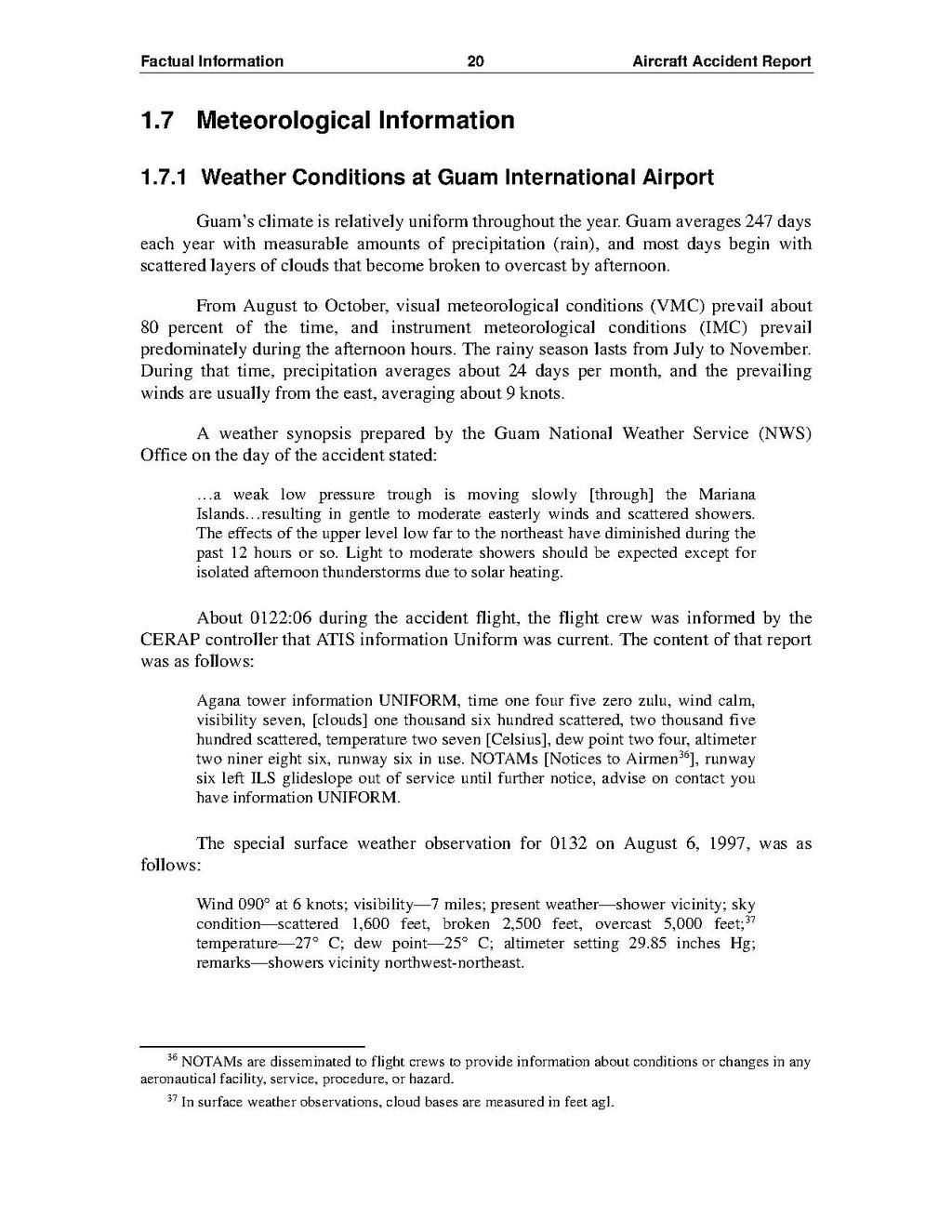1.7 Meteorological Information
1.7.1 Weather Conditions at Guam International Airport
Guam's climate is relatively uniform throughout the year. Guam averages 247 days each year with measurable amounts of precipitation (rain), and most days begin with scattered layers of clouds that become broken to overcast by afternoon.
From August to October, visual meteorological conditions (VMC) prevail about 80 percent of the time, and instrument meteorological conditions (IMC) prevail predominately during the afternoon hours. The rainy season lasts from July to November. During that time, precipitation averages about 24 days per month, and the prevailing winds are usually from the east, averaging about 9 knots.
A weather synopsis prepared by the Guam National Weather Service (NWS) Office on the day of the accident stated:
- ...a weak low pressure trough is moving slowly [through] the Mariana Islands...resulting in gentle to moderate easterly winds and scattered showers. The effects of the upper level low far to the northeast have diminished during the past 12 hours or so. Light to moderate showers should be expected except for isolated afternoon thunderstorms due to solar heating.
About 0122:06 during the accident flight, the flight crew was informed by the CERAP controller that ATIS information Uniform was current. The content of that report was as follows:
- Agana tower information UNIFORM, time one four five zero zulu, wind calm, visibility seven, [clouds] one thousand six hundred scattered, two thousand five hundred scattered, temperature two seven [Celsius], dew point two four, altimeter two niner eight six, runway six in use. NOTAMs [Notices to Airmen[1]], runway six left ILS glideslope out of service until further notice, advise on contact you have information UNIFORM.
The special surface weather observation for 0132 on August 6, 1997, was as follows:
- Wind 090? at 6 knots; visibility--7 miles; present weather--shower vicinity; sky condition--scattered 1,600 feet, broken 2,500 feet, overcast 5,000 feet;[2] temperature--27? C; dew point--25? C; altimeter setting 29.85 inches Hg; remarks--showers vicinity northwest-northeast.
